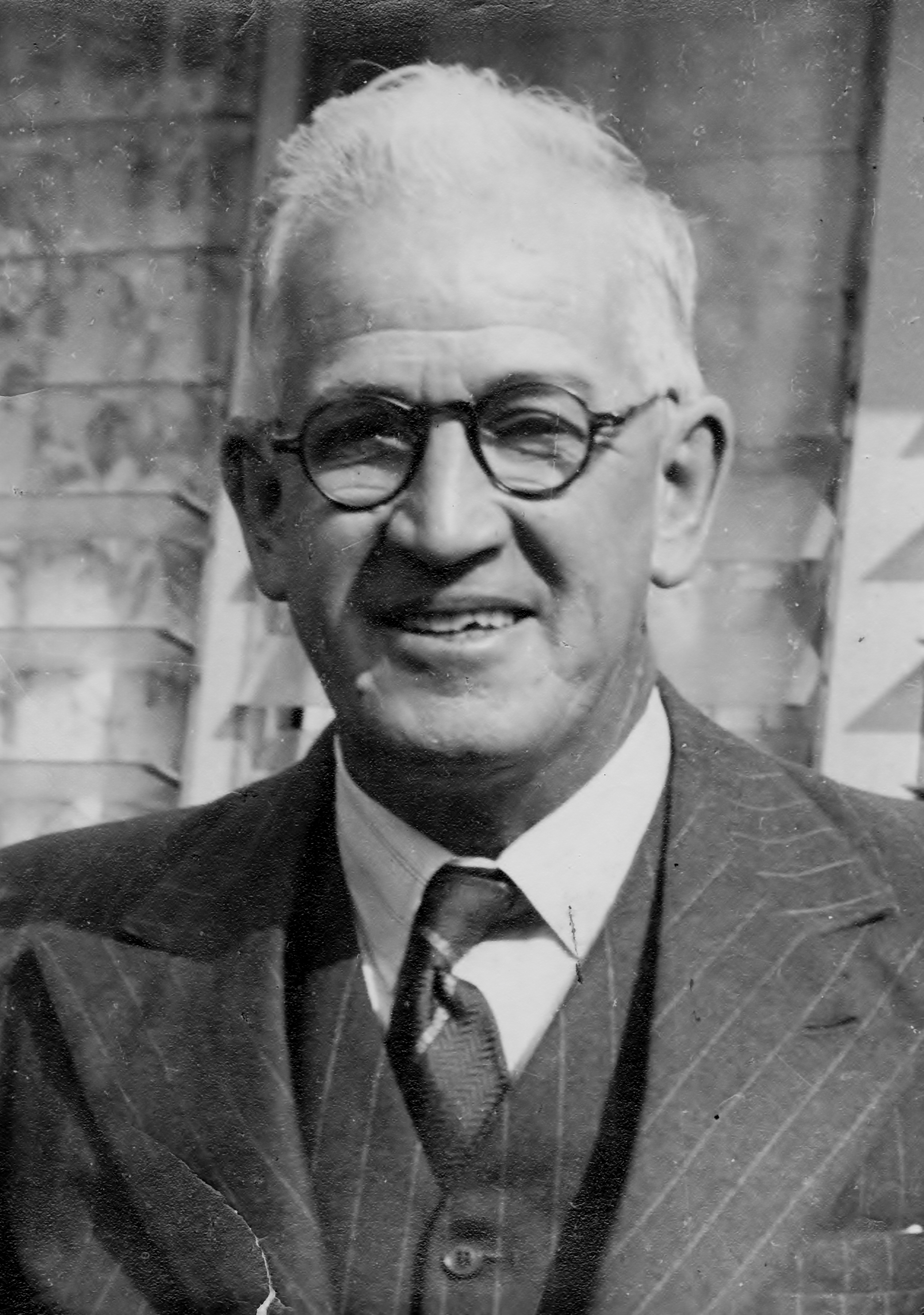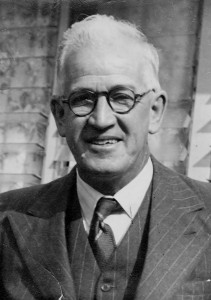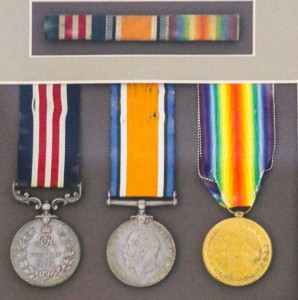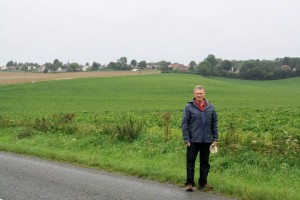Vernon James Williams MM became an Orange lad when he moved to Amaroo in 1904 at age 15. His parents, James and Elizabeth Williams moved from Collector to allow James to take up his position as school teacher at Amaroo School.
Vernon was born in Sutton on 29 July 1888 and lived in Collector between 1894 and 1904. He came from a close knit rural family which, for two generations, had been involved enthusiastically in church and community affairs. Education had been important to the family over several generations.
Vernon secured his first position as a schoolteacher in 1907, at the age of 19 and taught in several small schools including High Range, Jellore, Mandemar and Winduella.
Vernon enlisted on 1 May 1916 and trained at the Musketry school at Liverpool. Vernon, like many of the men who enlisted around this time, would have realised that he was going over to the Western Front to fight a difficult war which had already claimed the lives of many Australians and had stagnated in trench warfare. On 31 October 1916 his family and friends from Amaroo, Nyrang and Cudal presented Vernon with a watch and other gifts at a farewell social.
Vernon embarked on the Port Napier on 17 November 1916. Following training in England he was transferred to France and in April 1917 joined the 29th Battalion, 8th Brigade, 5th Division AIF at a time when the German High Command had adopted a more flexible defence system than trench warfare known as defence of depth, whereby the Germans built a series of fortified pill boxes each containing 10 to 40 men, supported with mutual fire from other posts which were located well into the rear of the German defence system. The pill boxes provided protection from artillery barrage and were protected using machine guns which were located on the roof of the pill box and in surrounding shell holes. They also used gas.
In response to this new tactic, the allies developed a tactic called creeping barrage, whereby the line of attacking allied soldiers moved just behind the falling shell fire from their own army, which enabled them to reach the pill box before the enemy who were sheltering inside could rush out to counter attack. Later in the war, the enemy was bombarded with assaults from planes, tanks, cannons and shellfire, prior to the men advancing on the enemy. This new strategy was well received by the men.
The 29th Battalion war diaries show that there was much emphasis placed on training and as a result the 29th Battalion was a highly skilled unit with a strong team spirit.
During 1917-18, the 29th Battalion fought in a number of major battles in the trenches along the Western Front including Polygon Wood, Amiens and the St Quentin Canal, as well as playing a supporting role in a number of others including Bullecourt and Morlancourt.
During the Allied Hundred Days Offensive that was launched on 8 August 1918, the battalion took part in the 8th Brigade’s advance up the treacherous Morcourt Valley, subsequently achieving a considerable feat by capturing the town of Vauvillers. The battalion fought its last battle of the war in late September alongside the US 30th Infantry Division, when they breached the German defences along the Hindenburg Line as part of the final allied offensive of the war. Aimed at the Le Catelet Line near Bellicourt, the battalion advanced on Nauroy on 29 and 30 September.
It was at the battle near Nauroy that Vernon was awarded the Military Medal. On 29 September the 29th Battalion moved around south of Bellicourt in the direction of Nauroy. Around 11.50am there was an attack on Nauroy Wood Fort. Four tanks from the 49th Battery were destroyed. By mid-afternoon the 29th Battalion had advanced on the concrete fort and Nauroy Wood and silenced the enemy 77mm field guns. The men were then subject to enfilade fire from heavy enemy artillery and machine gun fire from Cabaret Wood on the left flank and it was decided that it would be too costly to continue the advance east of Nauroy. During the night the companies moved forward and cleared the village of Nauroy.
The Germans had established small fortresses on the high points at Lamp Signal Station and the Sugar Factory and it was clear that the advance could not continue until these strong points were overcome. These forts each had two field guns, heavy machine guns, anti-tank rifles and a detachment of infantry for protection. The 29th was given the task of capturing the Sugar Factory held by the 1st Battalion of the 81st Infantry Regiment firing at almost point blank range.
At 4pm the 29th Battalion attacked the Sugar Factory, after an ineffectual preparatory bombardment from 18 and 60 pound allied guns. After ten minutes they were forced to suspend their attack due to heavy machine gun fire from the concrete bunkers, as well as enfilade from Cabaret Wood. The enemy was observed to be massing for a counter attack. A decision was taken for the allies to pull back to the Le Catelet-Nauroy line.
Vernon was one of four runners during this battle who maintained communications between the various companies and battalions, while under enemy fire. Vernon and three other gallant runners received the Military Medal for their bravery.
Vernon’s citation reads:
At Nauroy on 30.9.1918
For conspicuous bravery and devotion to duty. This soldier established an observation post on commanding ground from which to observe the advances of the battalion attack on the high ground east of the village. The O.P. was seen by the enemy and throughout was continually under machine gun fire, but Pte Williams carried on by telephone from the post and kept Battalion and companies acquainted with all movements of the enemy as well as of our own troops.At the completion of the operation it was important to convey important messages to the 4 companies that had taken part and to find their exact positions. This soldier volunteered to do this through heavy machine gun and shell fire he went out and brought back the information. Whilst doing this, he, in addition, conveyed messages from company to company.
Pte Williams showed a total disregard of danger by his devotion to duty was of the utmost inspiration to his battalion and also to the companies. This soldier has at all times performed similar work.
Signed J Talbot Hobbs
Major-General
Commanding 5th Australian Division
Unknown to them at the time, this was the last battle fought by the 29th Battalion.
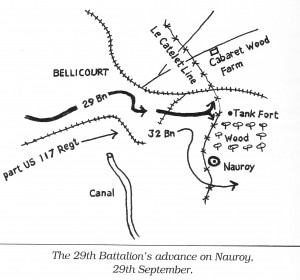
Map of the Battle of Nauroy 1918.
Image courtesy Black and gold: the history of the 29th Battalion, 1915-1918.
Vernon eventually returned Australia on 23 July 1919 and was given a warm welcome home by friends and family at Amaroo. The family are aware that he suffered from his war experiences and on at least one occasion entered hospital for rehabilitation.
Vernon moved to Willoughby and, on 28 December 1921, married Emma Louisa Johnson at St Cuthbert’s Anglican Church Naremburn. Vernon continued his career as a teacher, taking positions in Westin and Hornsby, Lindfield and Warrawee Public Schools. He and Emma had three children, Francis (called Jim), Nona and Harold (known as Ken).
Vernon died in his home in Junction Road, Wahroonga, on 4 August 1954 aged 66.
His family are honoured to be his descendants and recognise the values of faith, family, education and duty to country which has been exemplified by his life.
Researched and written by Julia Williams, 2015.
* Austin, Ronald J 2008, Black and gold: the history of the 29th Battalion, 1915-1918, Slouch Hats Publications, McCrae, VIC.
* Australian Imperial Force unit war diaries, 1914-18 War. 8th Brigade, 5th Australian Division. Australian War Memorial
* Australian Imperial Force unit war diaries, 1914-18 War. 29th Battalion, September 1918. Australian War Memorial
* National Archives of Australia Service Records
* National Library of Australia

